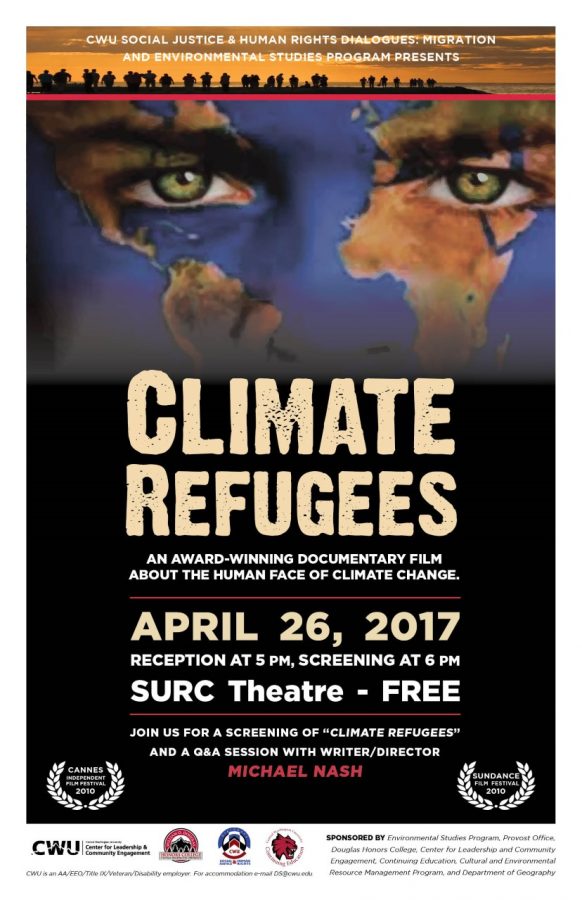Climate documentary comes to CWU
Courtesy of the CWU Environmental Studies program
“Climate Refugees” fits the yearly campus-wide dialog, Social Justice and Human Rights, which changes each year.
April 20, 2017
The reality of climate change is easy to ignore because we equate it with small, gradual changes or a polar bear on the last patch of ice in an open, barren sea. But documentarian Michael Nash looks to put a human face on climate change with his film, “Climate Refugees.”
Next Thursday, April 26, CWU’s Environmental Studies program is hosting Nash and playing his film. There will be a reception at 5 p.m. prior to the film and then a Q&A session with Nash afterwards.
He will also be showing new, updated footage, according to Pamela McMullin-Messier, program director of environmental studies. This event is a part of the Social Justice and Human Rights year-long dialogue on migration.
“It will be a unique opportunity for students to be able to ask questions and actively engage with the issues raised in the film,” said McMullin-Messier in a Q&A session for the Publicity Center.
This film will be a good tie-in and lead off into environmental studies dialogue for next year: sustainability, McMullin-Messier said.
Climate change become highly politicized and this has caused people to refuse to look at the scientific evidence behind the actual problem.
“Facts are facts, what you do about it is political,” Geography Professor Bob Hickey said.
“Climate Refugees” brings the faces of those who are affected by climate change to the big screen and shows that it is a real issue that is affecting millions of real people. It shows that while often times climate change is a slow process, we can see the change.
“If you can see it coming why not do something about it sooner rather than later,” McMullin-Messier said.
Most climate refugees are from places such as Myanmar, Indonesia and the Maldives, a small island chain off the coast of India that lies at sea level.
The facts associated climate change, such as ice melt, carbon emission levels and sea level rise, are often dismissed or ignored because many do not view it as a problem that needs to be dealt with, even though we are already facing many of the problems that arise as a result.
“Global change is a huge complicated issue,” Hickey said. “Humans are notwired to think long term.”
A climate refugee is someone who is displaced because of a change in environment. Whether it is a gradual change such as a rise in sea level or a sudden disaster, like a hurricane or earthquake.
Hickey said that America does not have thousands of people displaced by climate change annually, leading to refugees becoming a hotly contested issue.
“They’re left with no choice, we in America do not understand this,” Hickey said. “You move, you kill or you die.”
Nash’s film looks at some of these refugees: such as the survivors of Hurricane Katrina in New Orleans.
The film will start at 6 p.m. on April 26 in the SURC Theater. There will be a reception held prior to the film and then a Q&A session led by environmental studies faculty afterwards, where students can ask Nash about “Climate Refugees,” as well as his other works.
According to an article written in 2015 by the United Nations Refugee Agency, since 2008 there are approximately 22.5 million climate refugees and some sort of natural disaster displaces about one person per second.


